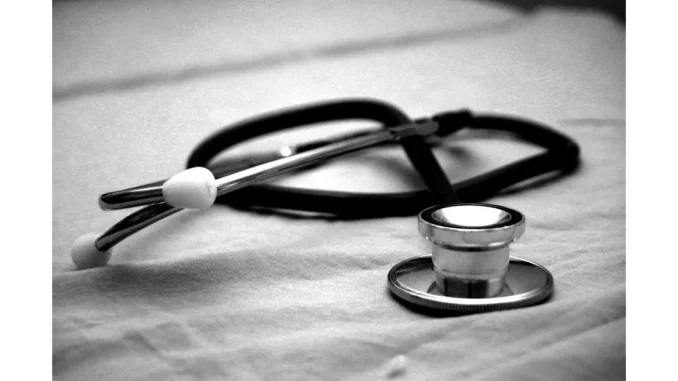
In the rapidly advancing world of healthcare technology, remote patient monitoring (RPM) devices have emerged as a pivotal force driving innovation and transformation. To gain a deeper understanding of this burgeoning market, I recently engaged in an insightful conversation with Dr. Emily Thompson, a distinguished healthcare technology analyst with over 15 years of experience. Our dialogue provided a compelling glimpse into the dynamics propelling the RPM market, which is anticipated to soar from USD 1.3 billion in 2024 to an impressive USD 6 billion by 2034. This article encapsulates the essential factors fuelling this remarkable growth trajectory.
Dr. Thompson commenced our discussion by addressing the fundamental shifts in healthcare that have facilitated the rise of RPM devices. “The surge in chronic diseases is undoubtedly a major catalyst,” she observed. As conditions such as diabetes, cardiovascular disease, and respiratory disorders become increasingly prevalent, continuous monitoring has transitioned from a luxury to an essential healthcare practice. “Remote patient monitoring devices enable real-time data collection and analysis, which is crucial for the effective management of these conditions,” she elaborated.
Moreover, the demographic trends contributing to the expansion of the RPM market cannot be ignored. Dr. Thompson highlighted the significance of an ageing global population as a key driver. RPM devices are particularly beneficial in addressing the unique health challenges faced by the elderly, allowing for early detection of complications and improving patient outcomes and quality of life. This demographic shift underscores the increasing reliance on technology to meet healthcare needs efficiently.
Technological advancements form another cornerstone of this growth narrative. Dr. Thompson expressed her enthusiasm for the innovations in wireless technology, artificial intelligence (AI), and the Internet of Things (IoT) that have rendered RPM devices more user-friendly and accessible. “AI integration facilitates predictive analytics, enabling healthcare providers to anticipate potential health issues,” she explained. Such technological advancements not only enhance device functionality but also broaden their adoption across diverse healthcare settings.
The transition towards value-based care models has further accelerated the uptake of RPM solutions. “Healthcare systems are increasingly prioritising preventive care to minimise hospital admissions,” Dr. Thompson noted. By empowering patients to manage their health autonomously, RPM devices align seamlessly with this paradigm shift, rendering them indispensable in contemporary healthcare strategies. Furthermore, the economic imperative for cost-effective solutions is evident. “RPM devices reduce the frequency of hospital visits, yielding substantial cost savings for both healthcare providers and patients,” she added.
Turning to the technological infrastructure underpinning RPM devices, Dr. Thompson underscored the pivotal role of blockchain technology in bolstering data security and patient privacy. “Blockchain provides an immutable record of patient data, effectively alleviating privacy concerns,” she explained. Additionally, the advent of 5G technology is revolutionising the RPM landscape by facilitating faster and more reliable data transfer. A particularly intriguing development is the emergence of multi-parameter monitoring devices, which offer a holistic view of a patient’s health by simultaneously measuring multiple health parameters. The emphasis on developing intuitive interfaces makes these devices accessible to even non-tech-savvy individuals, thereby broadening their user base considerably.
As our conversation shifted to the competitive landscape, Dr. Thompson described it as “intensely competitive.” Industry leaders such as Koninklijke Philips and GE Healthcare are at the forefront, yet emerging companies are making significant strides with innovative, cost-effective solutions. “There’s a substantial investment in research and development as companies strive to enhance patient outcomes and streamline healthcare delivery,” she remarked. Our discussion also touched upon recent industry developments, including Koninklijke Philips’ launch of an AI-enabled cardiovascular ultrasound platform, which exemplifies the industry’s commitment to leveraging AI to enhance healthcare delivery. Similarly, Roche’s FDA designation for a new Lp(a)-lowering medication reflects the ongoing efforts to tackle critical health challenges through pioneering solutions.
Reflecting on my conversation with Dr. Thompson, it is evident that the remote patient monitoring devices market stands on the brink of a transformative decade. With a robust compound annual growth rate of 15.7% projected until 2034, the market is poised to redefine healthcare delivery through technological integration and innovation. Dr. Thompson expressed optimism for the future, emphasising that the journey to USD 6 billion represents more than financial growth; it signifies a profound reshaping of healthcare for the better.
As observers, the evolution of the RPM market serves as a testament to the power of technology in enhancing human health. As we progress, it will be captivating to witness how these devices continue to bridge gaps in healthcare delivery, making quality care accessible to all.


Be the first to comment